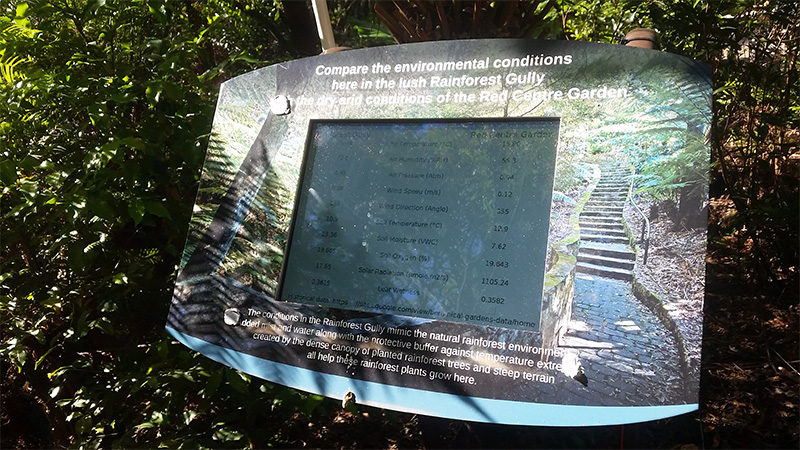Ecosystem Monitoring at the Australian National Botanic Gardens
A new system comparing different variables from two different ecosystems has been established at the Australian National Botanic Gardens.
A new system comparing different variables from two different ecosystems has been established at the Australian National Botanic Gardens.

A new system comparing different variables from two different ecosystems has been established at the Australian National Botanic Gardens.
UNSW Canberra Associate Lecturer Dr Adrian Garrido Sanchis installed two environmental monitoring systems in the Gardens, one at the Rainforest Gully and the other one at the Red Centre Garden.
“The system allows all people visiting the Gardens to see real-time data from two outdoor screens based at the Gardens and on a website and feel like a researcher comparing the data from two different Australian ecosystems,” he said.
Each station measures wind speed, wind direction, solar radiation, air temperature, air humidity, air pressure, soil oxygen level, soil temperature, soil moisture content, and leaf wetness.

“The comparison between the two ecosystems gives visitors the opportunity to see how the plants/vegetation and topography can influence the microclimates of two locations very close to each other within the same climatic region.
“It also allows visitors to understand what technology can do for us, how connected sensors and the use of the Internet of Things (IoT) provides data that can help us to understand the world in which we live,” Dr Garrido Sanchis said.
According to Dr Garrido Sanchis the conditions in the Red Centre Garde mimic those you would find in the arid centre of Australia and the conditions in the Rainforest Gully mimic those you would find in the Australian rainforests, two climates that are completely different from that of the ACT.
“From the data we are collecting we can learn how different the meteorological (microclimatic) conditions are in different ecosystems and how these can affect the climate in a certain region.
“Visitors will learn how to interpret and the significance of variables like wind speed and direction, solar radiation, air temperature, humidity and pressure, soil oxygen level, soil temperature, soil moisture, and leaf wetness , and how these variables are affected by the plants and topography within an ecosystem through information provided on the website and education programs within the Gardens,” he said.
Following on from this project Dr Garrido Sanchis said that there are several possible ideas for future projects including extending the project to monitor other variables such as water quality and finding new approaches to the use of the Internet of Things (IoT) in the context of smart cities of in this case smart gardens.
